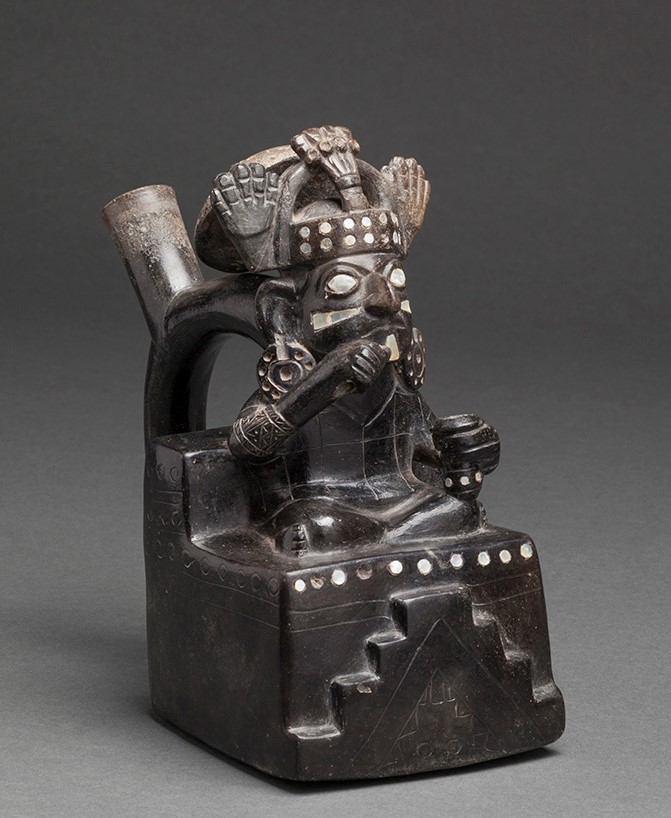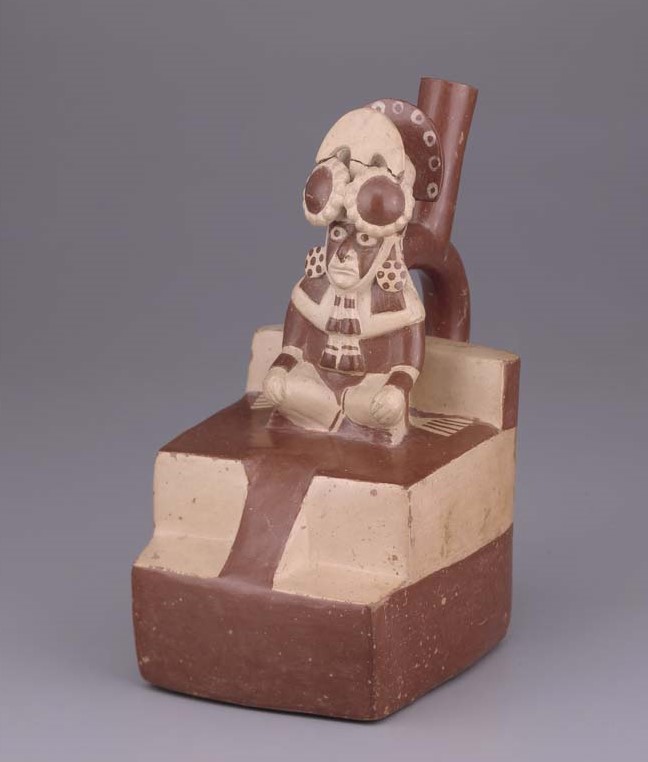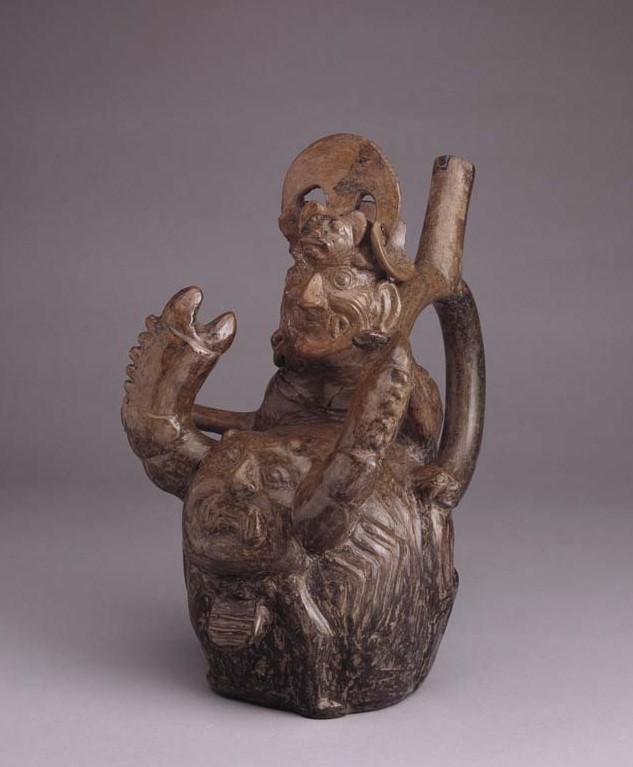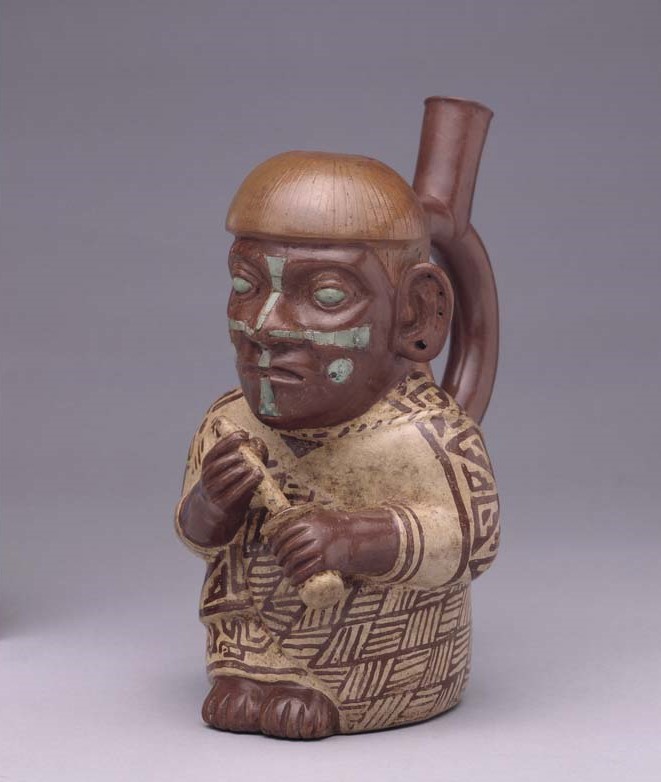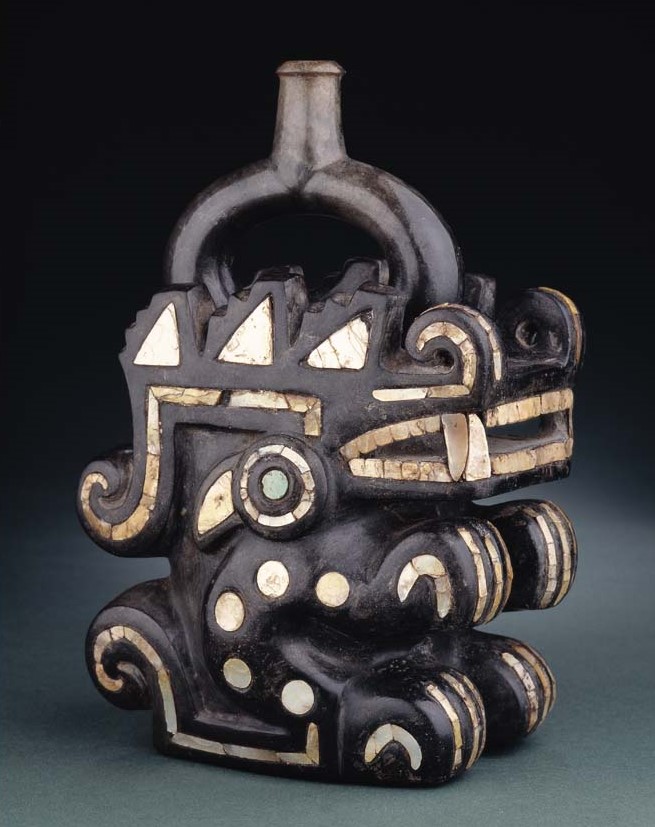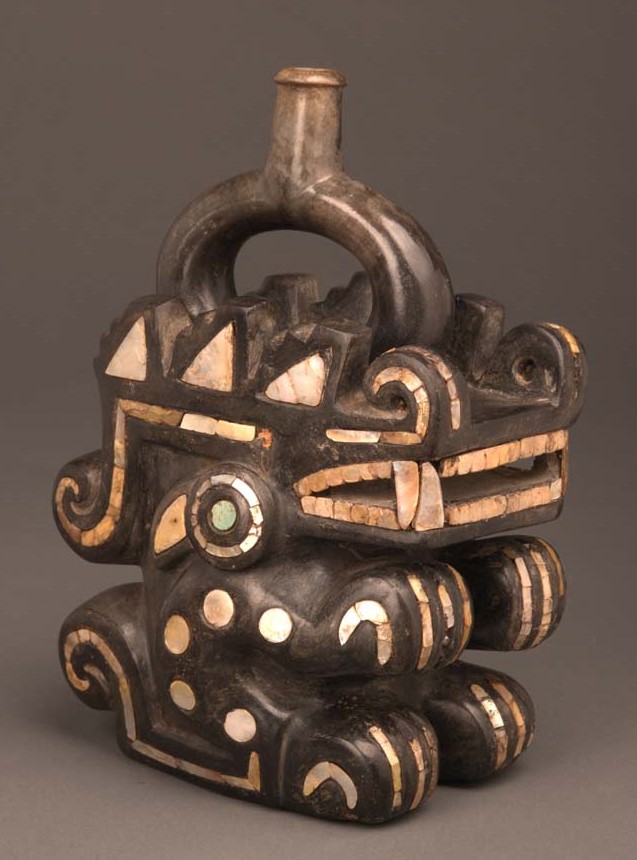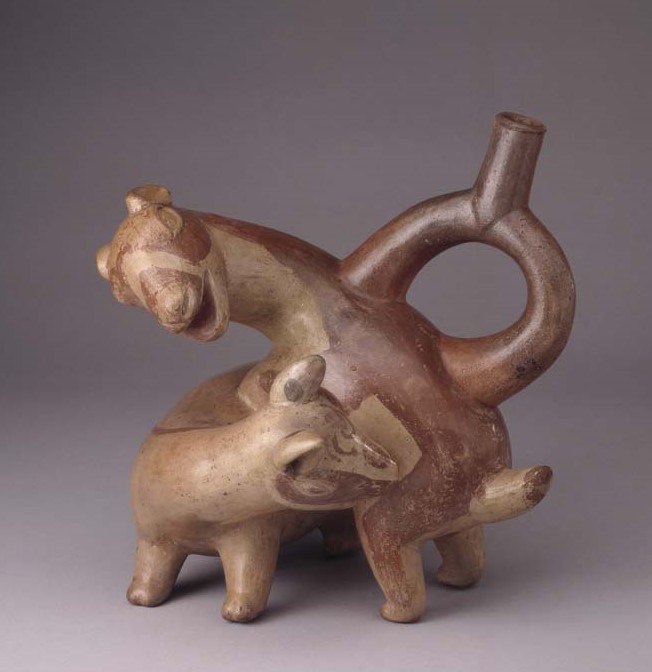Mochica Sculptural Ceramics
Room 2, Vitrine 15
Ceramic bottles
Peruvian Northern Coast
Florescent Epoch (1 AD – 800 AD)
ML001062, ML010855, ML010860, ML012801, ML012803, ML012858, ML012863.
In contrast with contemporary art, which is freely produced by individual artists, in the past artistic production was controlled by the elite. Under the supervision of priests and great lords, Mochica pottery makers achieved a high degree of artistic development. They produced naturalistic sculptures and drew scenes on the surfaces of their pottery using the so-called “fine line” technique.
Just as today in the Christian faith the symbol of the cross evokes the crucifixion of Jesus Christ, in Mochica art an image of a knife (or tumi) evoked ceremonial sacrifice. Both the Christian cross and the tumi of the Mochica are single elements which form part of a much larger narrative tradition.
Artists gave form to their beliefs, myths and ceremonies. Each object and representation can only be fully understood if we see them within the context of the entire artistic universe from which they emerged. To understand what these objects mean, it is necessary to interpret the pottery and images (iconography) as part of the culture’s myths and ceremonies.
A finely-wrought representation of an animal may appear to us as a beautiful naturalistic sculpture. However, this animal was considered a god and it appears in drawings in its anthropomorphic form. The sculptural representation of an individual may have formed part of a highly detailed pictorial scene, perhaps a ceremony represented in its entirety in another piece.
The majority of Mochica ceramics were placed in tombs as part of the culture’s cult of the dead. Their messages and symbolism were carried to “the next world” in the same way as the “Book of the Dead” of the ancient Egyptians.
